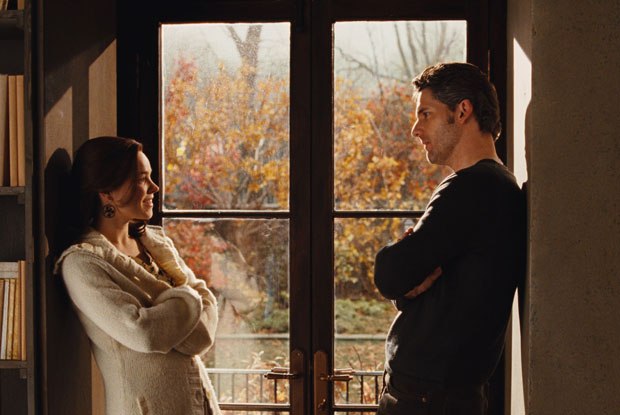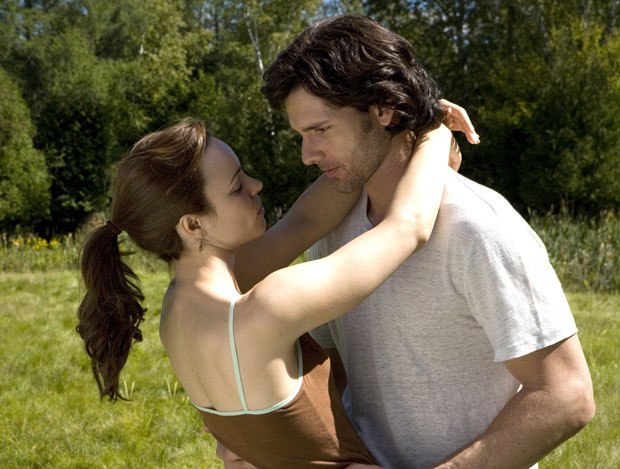An artsy Ghost? David Jones tells how The Time Traveler's Wife adds a new visual twist to the genre.
View Eric Bana's disappearing act in the trailer for The Time Traveler's Wife.
With The Time Traveler's Wife, Robert Schwenkte (Flightplan) has fashioned a stylish fantasy/romance about a Chicago librarian (Eric Bana) with a rare genetic disorder that causes him to time shift when he's under pressure, resulting in a very precarious love life with Rachel McAdams, to say the least. Yet Schwenkte had some very unique visual concepts concerning the look of the time traveling, which David Jones (The Spirit,, Black Hawk Down) shares with us along with other vfx tidbits.
Bill Desowitz: This is one of the most stylish time travel movies we've encountered in quite a while. What was the strategy behind the use of vfx?
David Jones: Our effects fell into two categories: the disappearance effect, which was the time travel, and then shots with multiple Henrys or impossible shots. There's a 1,500-frame shot in the late second act where we move through the first five years of their daughter's life all in one continuous camera move through the house, which was done with previs and sequence programmed motion control… So basically it fell into that: there were motion control things that duplicated Eric Bana when he time traveled to visit himself and then the disappearance itself, which is the character leaving the scene and going to another time frame. And one of the unique characteristics of the book and the film was that as he time travels he leaves behind his clothes. So with the help of fabulous [physical effects], we came up with a gag where one of the elements we'd shoot would be a form of Eric Bana that was supported entirely by balloons inside the clothing, so that the clothes would deflate and fall on cue to match the timing of the effect we were putting in there.
BD: And how did you arrive at the time travel look?
DJ: Robert, the director, started right at the beginning by referencing some old, Impressionistic-looking [experimental] films where people were playing with various aspects of film and camerawork and came up with some very strange, organic-looking smeary effects simply by playing in the lab with developing film. So he showed us some reference on that [including Light Rhythms] and we ended duplicated it by shooting elements of ink on cards and ink soaking into paper towels and wrapping those around 3D shapes. And using those to drive a 2D transformation with 3D maps using the ink; he wanted a slow, natural feeling of him being there and vanishing with his clothes on the ground.
BD: What's another notable effect?
DJ: The opening, which has a car crash, which happened at night during snow and since a lot of these are obviously greenscreen shots, we had to actually do one outside and they were generating a very dense look for snow hitting the windscreen and that bokeh of defocus you get when you have a light through water, the sort of big colored darts, which became the driving element of the title sequence. So one of the things we did was go and shoot fake snow on car windows and experimenting with different looks and then shooting that in HD and then using those elements along with the whole CG snow to get a natural look. Because any night photography is hard to shoot and it was especially tricky because the snow storm went up and then down and the violence of it. So it was hard orchestrating that since it was the first thing you see in the film.
BD: Talk about the studios you worked with on this?
DJ: The primary house was R!OT, which is where I worked. We sent the Visual Effects Supervisor, Jamie Hallett, to shoot the plates. And Rhythm & Hues were incredibly helpful as well. There's a scene where Henry is in the snow and has time traveled to the field behind Clare's family home, and comes across a deer. And we tried shooting a deer in Toronto but it wasn't impressive. So our very generous and good friends at Rhythm & Hues [Will Telford was the digital effects supervisor] actually did two animated deer for us for the two shots that we then comp'd in.
BD: What was the primary software that was used?
DJ: Primarily Maya, Fusion and Inferno: the holy trinity of visual effects. And Maya nCloth for additional clothing work for Henry during the various time travels.
Bill Desowitz is senior editor of AWN and VFXWorld.









